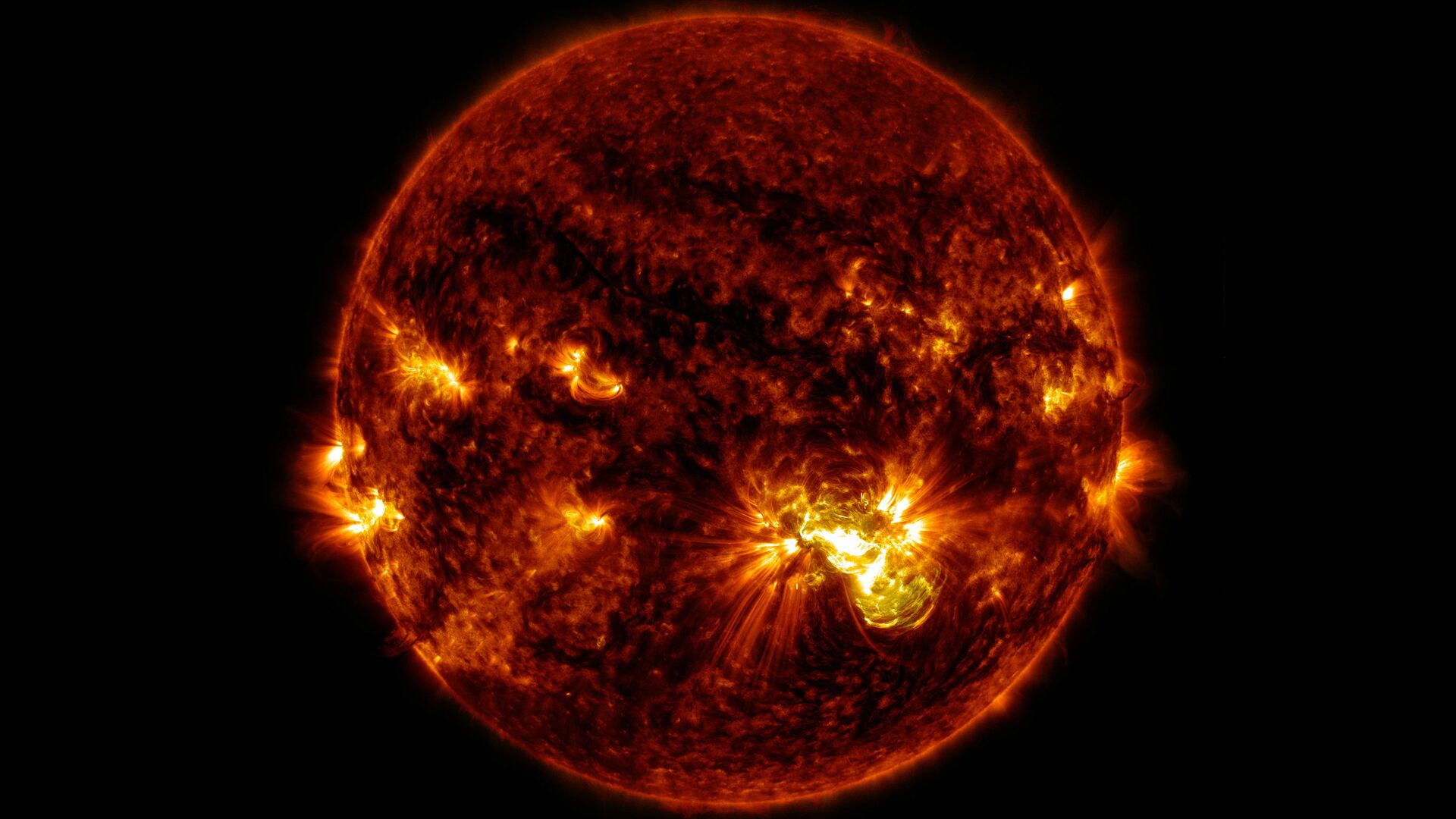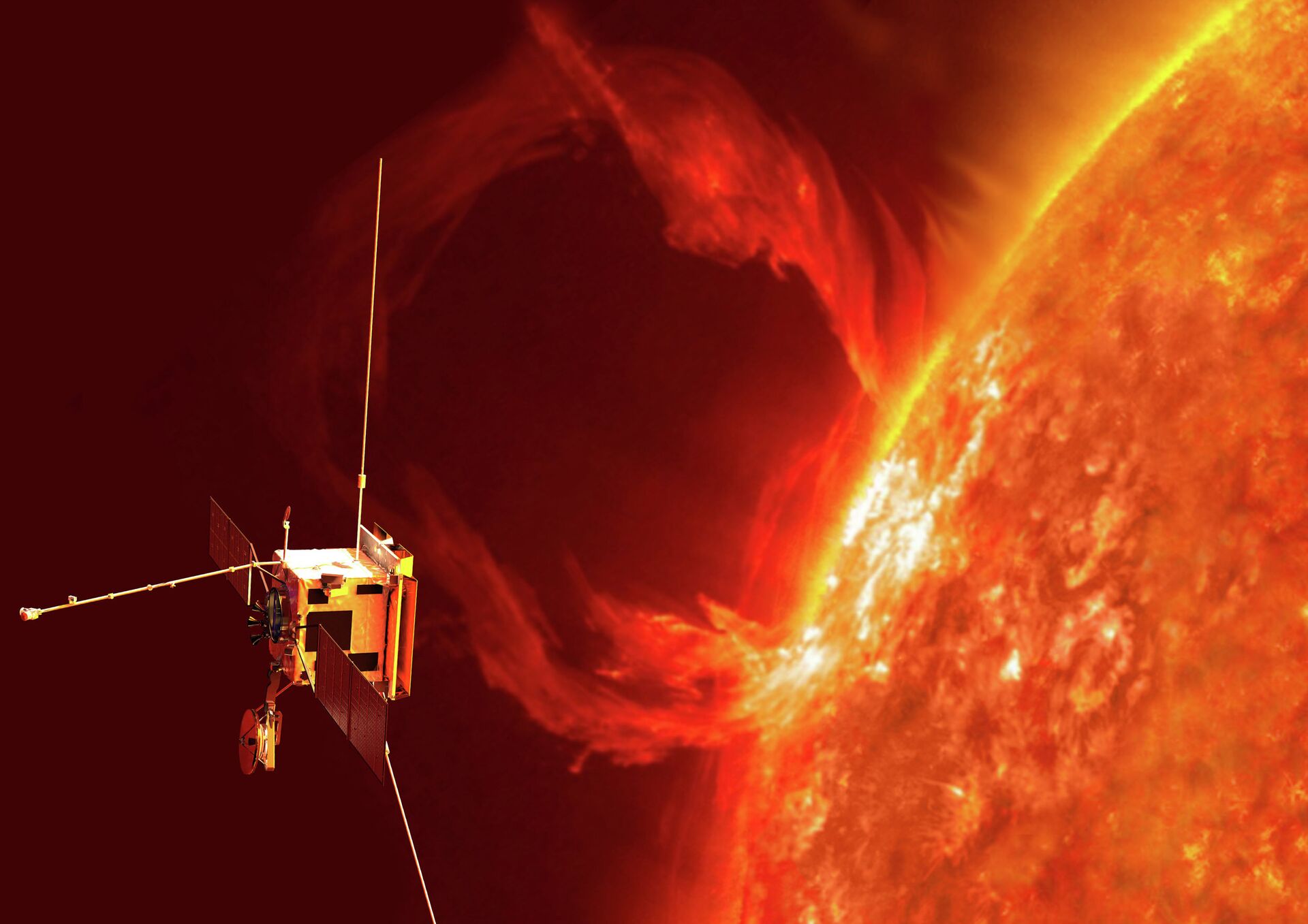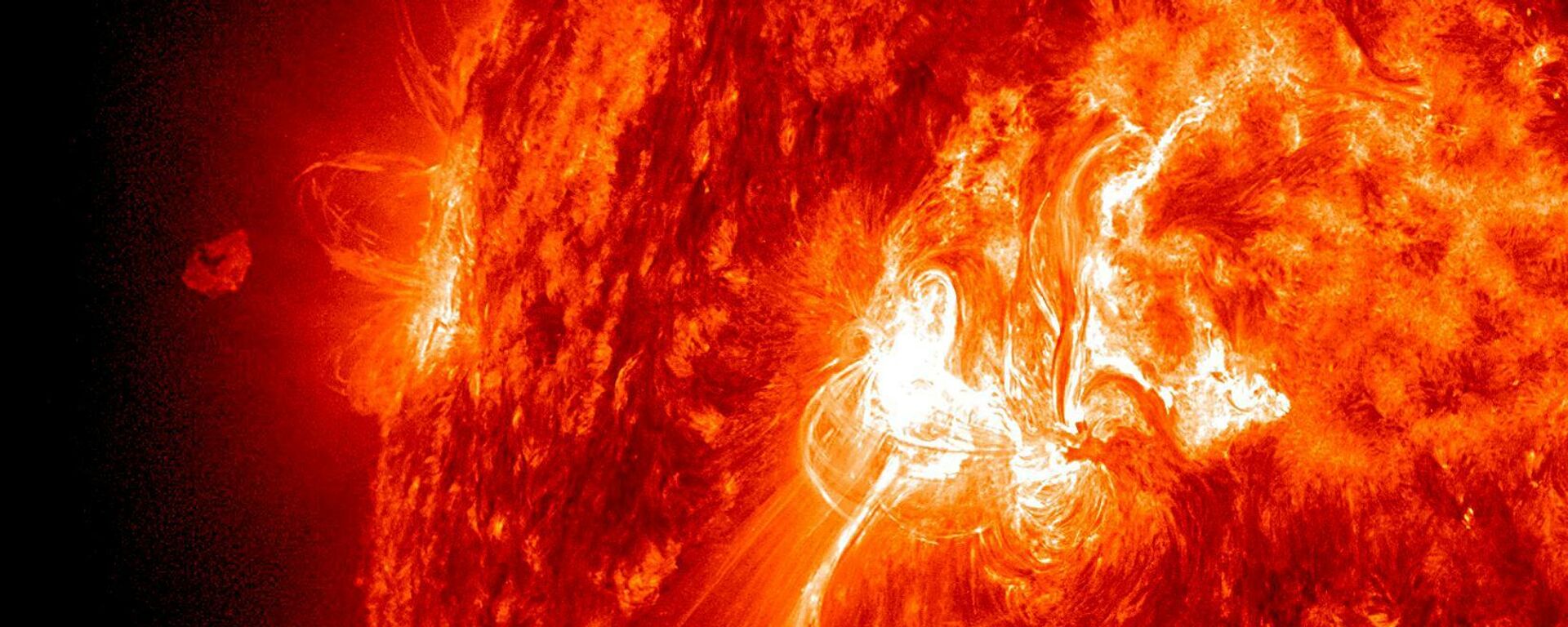https://sputnikglobe.com/20220511/scientists-claim-to-have-found-source-of-tiny-freckles-dotting-suns-surface-1095435099.html
Scientists Claim to Have Found Source of Tiny 'Freckles' Dotting Sun's Surface
Scientists Claim to Have Found Source of Tiny 'Freckles' Dotting Sun's Surface
Sputnik International
Solar physicists have been closely studying the intriguing phenomena of tiny speckles of brightness that appear and then fade in less than a minute on the... 11.05.2022, Sputnik International
2022-05-11T14:28+0000
2022-05-11T14:28+0000
2022-11-30T10:02+0000
nasa
nasa’s solar dynamics observatory (sdo)
science & tech
sun
https://cdn1.img.sputnikglobe.com/img/104197/85/1041978565_0:180:3001:1868_1920x0_80_0_0_8c56ae41dab8cc583a056276b774ae2e.jpg
The phenomena referred to by scientists as “solar dots”, appearing for less than a minute on the surface of the Sun, are likely the result of magnetic activity within the solar orb itself.A new analysis of the solar “freckles”, which are not to be confused with the larger sunspots regularly producing solar flares, has been published in The Astrophysical Journal.These smaller dots were spotted in images from the joint NASA-ESA Solar Orbiter, which was launched in 2020.On 20 May 2020, the spacecraft imaged some regions of so-called magnetic instability.Researchers led by astrophysicist Sanjiv Tiwari of the Lockheed Martin Solar and Astrophysics Laboratory took a closer look at one of these magnetic flux regions in extreme ultraviolet wavelengths. They observed around 170 solar dots, estimated to be around 675 kilometres (420 miles) in diameter and about 30 percent brighter than the plasma around them.After comparison with data from NASA's Solar Dynamics Observatory, showing the Sun's magnetic field, the dots appeared to be more densely clustered in regions of greater magnetic activity.Subsequent simulation revealed that the dots could represent moments when magnetic field lines descend into the Sun and intersect with those rising upwards from the solar surface.However, as some of the dots did not appear in the right regions for this explanation to hold true, the scientists said further observations were required.
https://sputnikglobe.com/20220407/canyon-of-fire-solar-wind-spitting-12000-mile-deep-chasm-opens-on-sun-1094549311.html
Sputnik International
feedback@sputniknews.com
+74956456601
MIA „Rossiya Segodnya“
2022
News
en_EN
Sputnik International
feedback@sputniknews.com
+74956456601
MIA „Rossiya Segodnya“
Sputnik International
feedback@sputniknews.com
+74956456601
MIA „Rossiya Segodnya“
nasa, nasa’s solar dynamics observatory (sdo), science & tech, sun
nasa, nasa’s solar dynamics observatory (sdo), science & tech, sun
Scientists Claim to Have Found Source of Tiny 'Freckles' Dotting Sun's Surface
14:28 GMT 11.05.2022 (Updated: 10:02 GMT 30.11.2022) Solar physicists have been closely studying the intriguing phenomena of tiny speckles of brightness that appear and then fade in less than a minute on the surface of the Sun, baffling scientists.
The phenomena referred to by scientists as “solar dots”, appearing for less than a minute on the surface of
the Sun, are likely the result of magnetic activity within the solar orb itself.
A
new analysis of the solar “freckles”, which are not to be confused with the larger sunspots regularly producing solar flares, has been published in The Astrophysical Journal.
These smaller dots were spotted in images from the joint NASA-ESA
Solar Orbiter, which was launched in 2020.
On 20 May 2020, the spacecraft imaged some regions of so-called magnetic instability.
Researchers led by astrophysicist Sanjiv Tiwari of the Lockheed Martin Solar and Astrophysics Laboratory took a closer look at one of these magnetic flux regions in extreme ultraviolet wavelengths. They observed around 170 solar dots, estimated to be around 675 kilometres (420 miles) in diameter and about 30 percent brighter than the plasma around them.
After comparison with data from NASA's Solar Dynamics Observatory, showing the Sun's magnetic field, the dots appeared to be more densely clustered in regions of greater magnetic activity.
Subsequent simulation revealed that the dots could represent moments when
magnetic field lines descend into the Sun and intersect with those rising upwards from the solar surface.
However, as some of the dots did not appear in the right regions for this explanation to hold true, the scientists said further observations were required.



